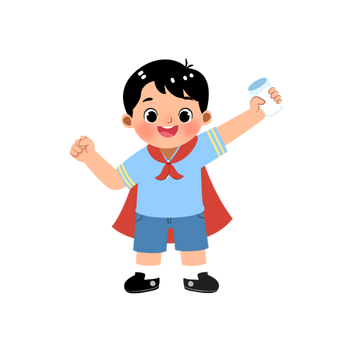Definition
What is Golfer’s elbow?
Golfer’s elbow (medial epicondylitis) causes pain and inflammation in the tendons that connect the forearm to the elbow. The pain centers on the bony bump on the inside of your elbow and may radiate into the forearm. It can usually be treated effectively with rest.
Golfer’s elbow is usually caused by overusing the muscles in the forearm that allow you to grip, rotate your arm, and flex your wrist. Repetitive flexing, gripping, or swinging can cause pulls or tiny tears in the tendons.
Despite the name, this condition doesn’t just affect golfers. Any repetitive hand, wrist, or forearm motions can lead to golfer’s elbow. Risky sports include tennis, bowling, and baseball — in fact, it’s sometimes called pitcher’s elbow. People may also get it from using tools like screwdrivers and hammers, raking, or painting.
Golfer’s elbow is not as well-known as its cousin, tennis elbow. Both are forms of elbow tendinitis. The difference is that tennis elbow stems from damage to tendons on the outside of the elbow, while golfer’s elbow is caused by tendons on the inside. Golfer’s elbow is also less common.
How common is Golfer’s elbow?
Please discuss with your doctor for further information.
Symptoms
What are the symptoms of Golfer’s elbow?
The common symptoms of Golfer’s elbow are:
- Pain and tenderness on the inner side of your elbow. Sometimes the pain extends along the inner side of your forearm. Pain typically worsens with certain movements.
- Your elbow may feel stiff, and it may hurt to make a fist.
- You may have weakness in your hands and wrists.
- Numbness or tingling. These sensations might radiate into one or more fingers — usually the ring and little fingers.
The pain of golfer’s elbow can come on suddenly or gradually. The pain might worsen when you:
- Swing a golf club or racket
- Squeeze or pitch a ball
- Shake hands
- Turn a doorknob
- Lift weights
- Pick up something with your palm down
- Flex your wrist
There may be some symptoms not listed above. If you have any concerns about a symptom, please consult your doctor.
When should I see my doctor?
You should contact your doctor if rest, ice and over-the-counter pain relievers don’t ease your elbow pain and tenderness. Seek immediate care if:
- Your elbow is hot and inflamed, and you have a fever
- You can’t bend your elbow
- Your elbow looks deformed
- You suspect you’ve broken a bone
Causes
What causes Golfer’s elbow?
Golfer’s elbow, also known as medial epicondylitis, is caused by damage to the muscles and tendons that control your wrist and fingers. The damage is typically related to excess or repeated stress — especially forceful wrist and finger motions. Improper lifting, throwing or hitting, as well as too little warm-up or poor conditioning, also can contribute to golfer’s elbow.
Many activities can lead to golfer’s elbow, including:
- Gripping or swinging clubs incorrectly or too forcefully can take a toll on your muscles and tendons.
- Racket sports. Excessive topspin can hurt your elbow. Using a racket that’s too small or heavy also can lead to injury.
- Throwing sports. Improper pitching technique in baseball or softball can be another culprit. Football, archery and javelin throwing also can cause golfer’s elbow.
- Weight training. Lifting weights using improper technique, such as curling the wrists during a biceps exercise, can overload the elbow muscles and tendons.
In addition, any activity that requires repeatedly bending and straightening your elbow can cause golfer’s elbow. This includes painting, raking, hammering, chopping wood, using a computer, doing assembly-line work and cooking. A day or two of yardwork or cooking for company usually won’t cause golfer’s elbow, though. The activity generally needs to be done for more than an hour a day on many days to cause a problem.
Risk factors
What increases my risk for Golfer’s elbow?
There are many risk factors for Golfer’s elbow, such as:
- Age 40 or older
- Performing repetitive activity at least two hours a day
- Obese
- A smoker
Diagnosis & treatment
The information provided is not a substitute for any medical advice. ALWAYS consult with your doctor for more information.
How is Golfer’s elbow diagnosed?
Golfer’s elbow is usually diagnosed based on your medical history and a physical exam. To evaluate pain and stiffness, the doctor may apply pressure to the affected area or ask you to move your elbow, wrist and fingers in various ways.
An X-ray can help the doctor rule out other causes of elbow pain, such as a fracture or arthritis. Rarely, more comprehensive imaging studies — such as MRI — are performed.
How is Golfer’s elbow treated?
The sooner you begin treatment the sooner you’ll be able to return to your usual activities.
- Put your golf game or other repetitive activities on hold until the pain is gone. If you return to activity too soon, you may make it worse.
- Ice the affected area. Apply ice packs to your elbow for 15 to 20 minutes at a time, three to four times a day for several days. To protect your skin, wrap the ice packs in a thin towel. It might help to massage the inner elbow with ice for five minutes at a time, two to three times a day.
- Take an over-the-counter pain reliever. Try ibuprofen (Advil, Motrin IB, others), naproxen sodium (Aleve, others) or acetaminophen (Tylenol, others).
- Use a brace. Your doctor might recommend that you wear a counter force brace on your affected arm, which might reduce tendon and muscle strain.
- Stretch and strengthen the affected area. Your doctor may suggest stretching and strengthening exercises. Physical or occupational therapy can be helpful, too. A type of strengthening (eccentric) that lengthens the tendon of the wrist extensor muscles has been shown to be particularly effective in treating chronic tendon irritation.
- Reduce the load on your elbow tendons. Wrap your elbow with an elastic bandage or use a splint.
- Gradually return to your usual activities. When your pain is gone, practice the arm motions of your sport or activity. Review your golf or tennis swing with an instructor and make adjustments if needed.
- Ask your doctor when surgery is appropriate. Surgery is seldom necessary. But if your signs and symptoms don’t respond to conservative treatment in six to 12 months, surgery may be an option. A new procedure involves minimally invasive, ultrasound-guided removal of scar tissue in the region of the tendon pain. More study is needed.
Other treatments used include corticosteroid injections, which have not been shown to be an effective long-term treatment. (1p7) A newer treatment being tried is platelet-rich plasma. This involves drawing a small amount of your blood, spinning it down and injecting it into the tender area. More studies are needed.
Most people will get better with rest, ice and pain relievers. Depending on the severity of your condition, the pain may linger for months to years — even if you take it easy and follow instructions on exercising your arm. Sometimes the pain returns or becomes chronic.
Lifestyle changes & home remedies
What are some lifestyle changes or home remedies that can help me manage Golfer’s elbow?
The following lifestyles and home remedies might help you cope with Golfer’s elbow:
- Strengthen your forearm muscles. Use light weights or squeeze a tennis ball. Even simple exercises can help your muscles absorb the energy of sudden physical stress.
- Stretch before your activity. Walk or jog for a few minutes to warm up your muscles. Then do gentle stretches before you begin your game.
- Fix your form. Whatever your sport, ask an instructor to check your form to avoid overload on muscles.
- Use the right equipment. If you’re using older golfing irons, consider upgrading to lighter graphite clubs. If you play tennis, a racket with a small grip or a heavy head may increase the risk of elbow problems.
- Lift properly. When lifting anything — including free weights — keep your wrist rigid and stable to reduce the force to your elbow.
- Know when to rest. Try not to overuse your elbow. At the first sign of elbow pain, take a break.
If you have any questions, please consult with your doctor to better understand the best solution for you.
Hello Health Group does not provide medical advice, diagnosis or treatment.
[embed-health-tool-bmi]


















